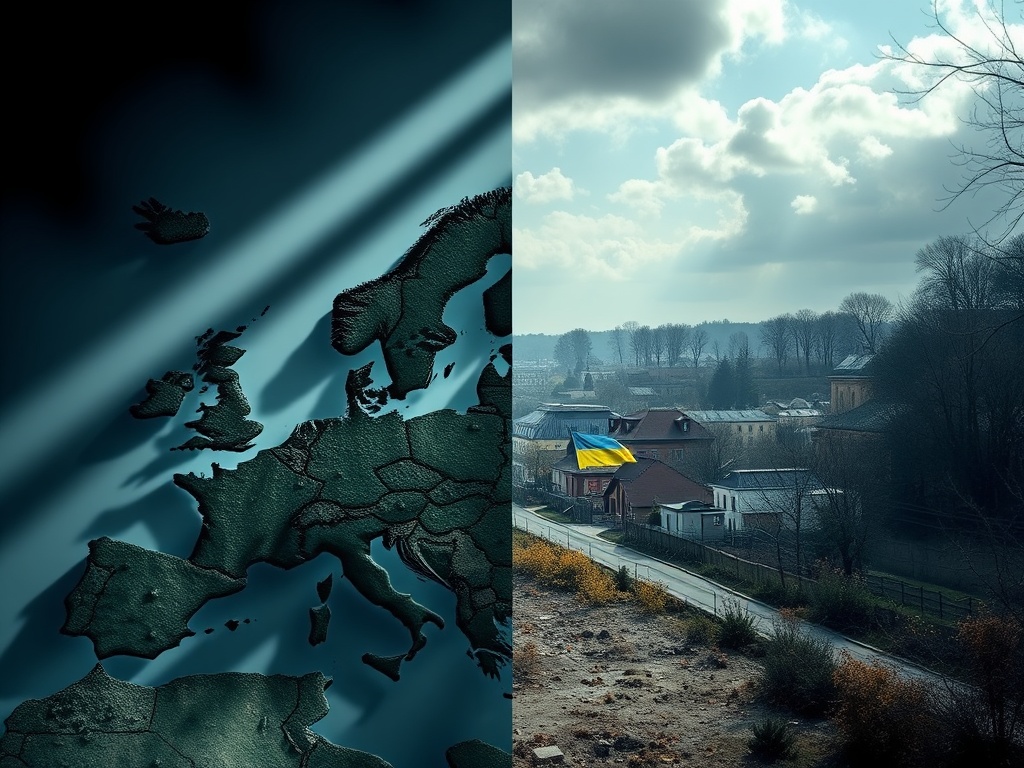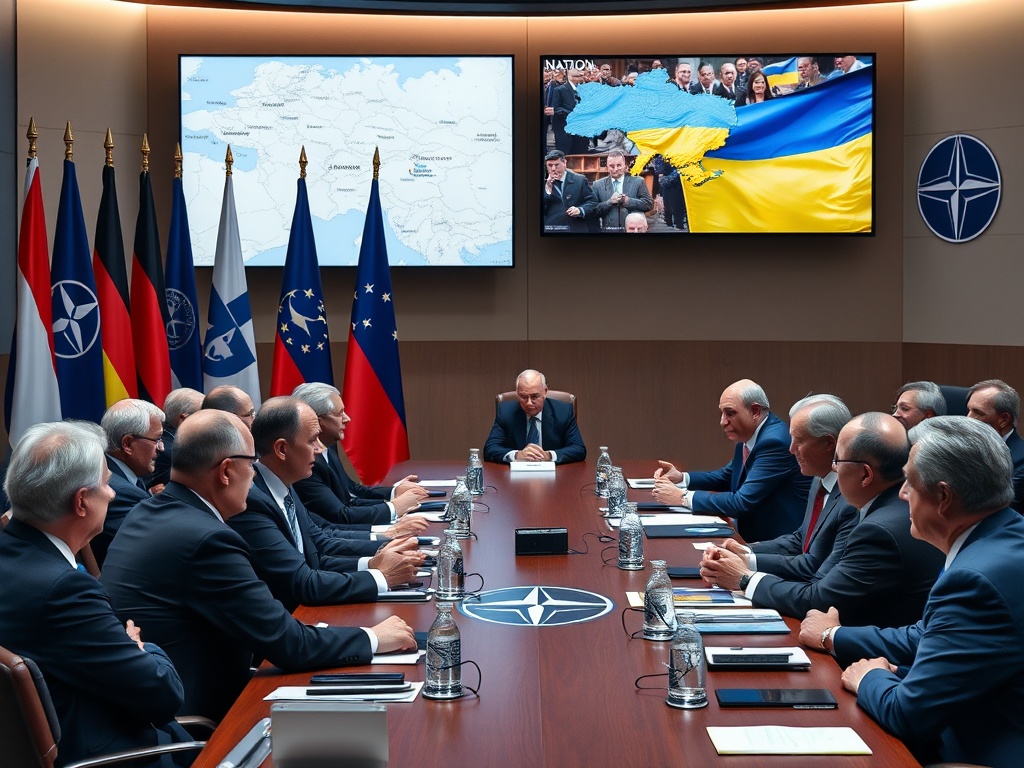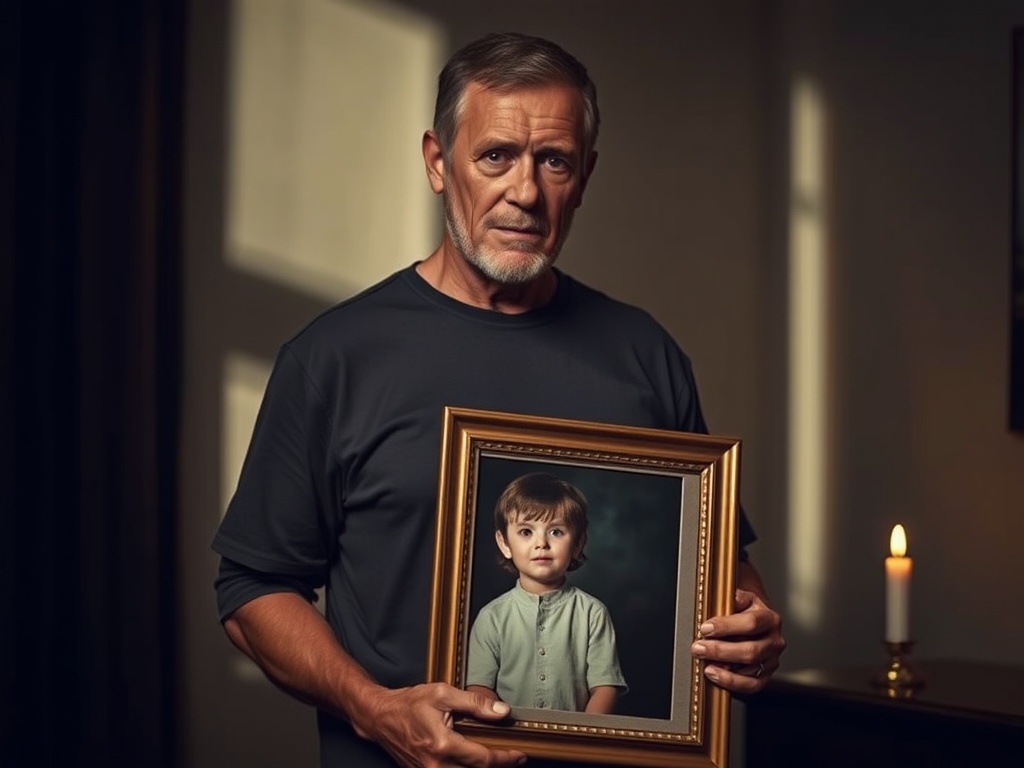This is Dispatches with Patrick Cockburn, a subscriber-only newsletter from The i Paper. If you’d like to receive this directly in your inbox every week, you can sign up here.
Nato leaders across Europe are responding to former President Donald Trump’s newfound friendship with President Vladimir Putin with a mix of alarm and confusion, largely fueled by an exaggerated perception of the Russian threat. The behavior of the Nato powers resembles that of East European communist leaders in the 1980s, who were horrified to learn that Soviet leader Mikhail Gorbachev had decided that the USSR would no longer act as their military protector and political overseer. In actuality, the United States continues to assure the security of Nato states within the current boundaries of the alliance.
What Trump has accomplished, through a perplexing combination of overt unpredictability, covert strategy, and self-serving realpolitik, is to dismantle many European misconceptions and propaganda narratives surrounding the Russia-Ukraine conflict. He has laid bare the strikingly embarrassing reality that three years into the war, the UK, France, Germany, and other Nato powers lack a viable plan to either successfully prosecute the war or negotiate a resolution.
The outrage over Trump’s perceived “betrayal of Ukraine” obscures this glaring policy void. If European governments wish to avoid self-marginalization, they must confront critical questions regarding their perspective on the conflict.
Pariah
This is particularly relevant in the UK, where there has been minimal substantive debate about the Ukraine war, aside from offering, at least in rhetoric, unwavering support for Ukraine. Any discourse that does occur often remains simplistic, condemning any peace negotiations with Russia over Ukraine as mere appeasement. The villainous Putin, now supposedly allied with the almost equally nefarious Trump, must continue to be viewed as a pariah, allowing the war to persist indefinitely.
The essential question that hawkish proponents of the war, including the entire political class in the UK, fail to address is how far their support for Ukraine translates into unconditional backing for a prolonged war. Those advocating against a ceasefire must remember that Moscow is also against it until a satisfactory deal is reached. This is because Russia perceives the current attritional warfare against a numerically inferior Ukraine as gradually favoring its military balance.
This sentiment is echoed by the highly regarded head of Ukrainian military intelligence, Lt-Gen Kyrylo Budanov, who reportedly informed a confidential meeting of the Ukrainian parliament in late January that “if nothing changes, the front line may begin to collapse and there will be problems.”
Wishful Thinking
The second crucial question that European nations, currently criticizing Trump, need to grapple with pertains to their future relations with Russia. Russia is the largest nation in Europe by population and occupies a staggering 40 percent of the continent’s land mass. An Italian author published a book just after the Second World War titled The Volga Rises in Europe, highlighting the idea that Europe is indivisible. Without an agreement with whoever governs Russia—and the Russian perspective on the importance of Ukraine has been consistent from the era of Catherine the Great to that of Putin—the continent faces inevitable destabilization.
President Joe Biden and Nato have evaded establishing achievable war objectives over the past three years, naively hoping in 2022-23 that Russia could be defeated on the battlefield, that regime change in Moscow would resolve their dilemmas, or that sanctions would lead to the collapse of the Russian economy. All of these assumptions have proven to be mere wishful thinking.
Nato’s strategies since 2022 have been rife with contradictions. At various times, the Russian military has been portrayed as a formidable force, reminiscent of the Red Army under Stalin in 1945, threatening to dominate Ukraine and advance into the Baltic states and central Europe. Conversely, the Russian military is also deemed so weak that Ukraine might successfully reclaim Crimea and Donbas, territories occupied since 2014, thus rendering a compromise peace unnecessary.
Heavy Russian Casualties

This strategy may have seemed plausible in 2022, following the initial shock of Putin’s invasion on February 24. However, the Ukrainian counter-offensive in 2023 failed to achieve significant results. General Valerii Zaluzhni, the Ukrainian commander-in-chief who led the counter-offensive, stated in an interview published on November 1, 2023, that “just like in the First World War, we have likely reached a level of technology that has led us into a stalemate. There will most likely be no deep and beautiful breakthrough.”
Since then, Russia has engaged in an attritional warfare strategy, aiming to leverage its superiority in military personnel to wear down the enemy. With Ukraine’s government-controlled population numbering only about 27-29 million, compared to Russia’s 144 million, this approach has shown a measure of success, albeit with significant Russian casualties. So far, there has not been a decisive breakthrough by Russian forces, though this cannot be dismissed entirely. The widespread use of drones complicates the ability of either army to concentrate sufficient troops at any one location to secure overwhelming local superiority.
Pledges
A peace agreement—if one is to be achieved—will likely reflect the broader military balance that currently leans towards Russia, but not overwhelmingly so. Putin squandered his chance for a complete victory in the initial days of his failed invasion three years ago and is unlikely to regain what he lost at the negotiating table.
Read Next
European leaders appear to have learned little from the ongoing conflict. Suddenly, there is a flurry of commitments from Nato countries to increase their defense spending by a marginal percentage, as if this would miraculously conjure well-equipped and trained army brigades from thin air. In reality, these changes require time to implement. It is also worth noting that the transformative elements of warfare in Ukraine have not stemmed from the deployment of costly new-generation aircraft, tanks, and missiles, but rather from the extensive use of relatively inexpensive and rudimentary drones.
While Trump may be a deeply controversial figure and arguably a dictator in the making, he possesses a crude understanding of political realities that European leaders, both individually and collectively, seem to lack. His aggrieved Nato allies lament their exclusion to the “kids’ table” during discussions, while American and Russian leaders engage in serious negotiations for peace. However, had these humiliated Europeans been included in early negotiations with the Russians, what could they have offered except a refusal to engage or terms they knew the Russians would reject?
The Devil Incarnate
Trump may indeed be the devil incarnate, but in matters of peacemaking, it is ill-advised, as the saying goes, “to give the devil all the best tunes.” The sight of European politicians advocating for war while stirring up jingoistic fervor against a potential peace deal—one that could spare countless young Ukrainians and Russians from further harm—is nothing short of disheartening.
It may be an unrealistic wish, but it would be fitting to send these hawkish European leaders to the front lines in eastern Ukraine and see how long they maintain their opposition to a ceasefire.
Further Thoughts
One of the significant challenges in improving the treatment of the mentally ill lies in the fact that 80 percent of the public is woefully uninformed about mental health issues, while the remaining 20 percent often possess a wealth of knowledge gained through personal experience with mental illness, whether their own or that of a loved one.
The misconception among the 80 percent is that mental illness is analogous to physical illness. However, in critical ways, they differ significantly. For a physically ill person, diagnosis is the first step toward treatment, but diagnosing mental illness is far more complex due to the uncertainty surrounding the nature and severity of symptoms. Labeling a patient with paranoid schizophrenia or bipolar disorder may sound definitive, akin to diagnosing tuberculosis or appendicitis, but in reality, it merely categorizes a collection of fluctuating symptoms. While medications can help manage these symptoms, they do not cure the underlying illness. “You may be surprised to learn that we have drugs that work quite well, but we do not know why they work,” a psychiatrist once confided to a friend whose son was experiencing a breakdown.
Additionally, the public often fails to grasp that psychosis—characterized by a breakdown of rational thought—is distinctly different from mental health issues such as anxiety and depression. Therapeutic approaches like cognitive behavioral therapy (CBT) tend to be effective only if a mentally ill individual is already stable on medication, and even then, success is not guaranteed. There is no panacea.
The most significant self-inflicted mental health crisis of the past fifty years has been the widespread closure of mental asylums across the globe. This phenomenon arose from a failure to recognize or appreciate that individuals experiencing severe psychosis still require care from others. The introduction of antipsychotic medications in the 1950s reduced, but did not eliminate, this necessity.
Governments were drawn to the idea of shuttering these large, costly Victorian-era asylums—often situated on valuable property—under the progressive-sounding banners of “de-institutionalization” in the U.S. and “care in the community” in the UK. Advocates for this movement believed they were liberating individuals from unwarranted confinement for unconventional behavior, as famously illustrated in the influential film One Flew Over the Cuckoo’s Nest (1975).
As a result of dismantling the old mental hospitals—far from a utopia, but at least offering refuge to the most vulnerable—families were left to care for severely ill relatives without support. In the U.S., the number of psychiatric beds plummeted by 90 percent, from 558,000 in 1955 to just 53,000 in 2005. In the UK, the decline was from about 150,000 beds to a mere 24,000 by 2022. Many individuals denied access to necessary care now find themselves incarcerated. Although the exact percentage of mentally ill individuals within the UK prison population remains unclear, a report highlights that the largest de facto mental institutions in the U.S. today are Los Angeles County Jail, Chicago’s Cook County Jail, and New York’s Rikers Island Jail.
Beneath the Radar
Amid President Trump’s tirade against President Volodymyr Zelensky, the most notable accusation was that the Ukrainian leader is an unelected and unpopular “dictator.” However, much of Trump’s verbal assault focused on U.S. aid, claiming that Zelensky seeks to maintain the “gravy train.” Trump asserted that Ukraine had received “350 billion dollars” from the U.S., while Ukrainian sources contend that the actual figure is closer to $100 billion.
Zelensky can counter the claim of being an unpopular autocrat, but Ukraine remains vulnerable concerning accusations of corruption. A significant portion of American assistance is funneled through USAid, which accounts for approximately 40 percent of the agency’s total disbursements. However, USAid has faced considerable scrutiny and is being labeled a hotbed of corruption by figures like Trump and Elon Musk.
Ukraine’s vulnerability to any Trump-led investigation into the expenditure of U.S. aid since the Russian invasion on February 24, 2022, is palpable. Last year, I learned from a well-connected source in Ukraine that a senior Ukrainian official attempted to deposit $350 million in cash into an Italian bank. The bank declined the deposit, but Italian authorities requested silence on the matter.
Officials within the Biden administration expressed frustration over their inability to curb corruption in the Ukrainian government; they were reluctant to publicly condemn it for fear of undermining domestic support for Ukraine. Their hope was to reduce the percentage of stolen funds from 40 percent to a more acceptable 20 percent.
This issue holds political significance, as one reason U.S. voters are hesitant to support aid to Ukraine—and other nations—is their conviction, not entirely unfounded, that their tax dollars are being squandered on corrupt regimes abroad. Should Trump’s conflict with Zelensky escalate, this could become a focal point.
Cockburn’s Picks
It is striking to see the Financial Times advocating for the renationalization of Thames Water, which has recently been granted court permission to borrow an additional £3 billion at high interest on top of its existing £17 billion debt. An editorial states that “Thames Water, which supplies a quarter of the UK population, is the poster child for the failures of England’s experiment with privatizing formerly public regional water companies, which were launched with zero debt in 1989.”
It is curious to witness the swift demise of privatization, a cornerstone of Margaret Thatcher’s economic policies, with so little fanfare.
This is Dispatches with Patrick Cockburn, a subscriber-only newsletter from The i Paper. If you’d like to receive this directly in your inbox every week, you can sign up here.




